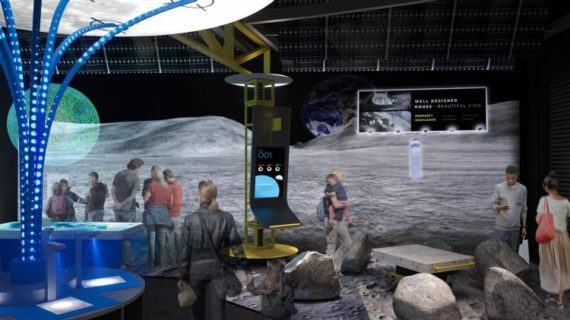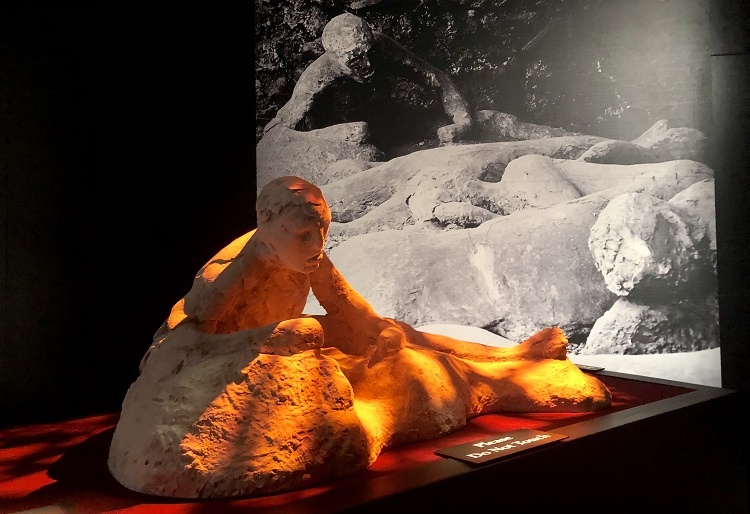
7 reasons to catch the explosive ‘Pompeii: The Exhibition’ at Carnegie Science Center
This article first appeared at NEXTpittsburgh.com, a media partner of Kidsburgh. Sign up here for NEXTpittsburgh’s free newsletter filled with all the latest news about the people driving change in our city and the innovative and cool things happening here. Photo above by Sally Quinn.
When Mount Vesuvius erupted in 79 A.D., the city of Pompeii was destroyed within 24 hours. Pompeii and its citizens were buried under 12 feet of ash and stone, and forgotten. It was just 250 years ago that the city was rediscovered. Since then, archaeologists have worked to unearth the people, buildings and artifacts of their daily lives. You can witness this fascinating story in Pompeii: The Exhibition at the Carnegie Science Center from Oct. 2 to April 23.
The exhibit includes more than 180 pieces from the Naples Archaeological Museum in Italy, as well as the largest collection of body casts that have ever been seen.
Intrigued? Check out our top reasons you will want to put Pompeii on your map.
1. Body Casts
As archaeologists worked to painstakingly uncover human remains, they found spaces in which they could pour plaster of Paris. From there, they could reveal the final poses, clothing and faces that were captured in the compacted ash. One man was found in a crouch, covering his mouth with his cape to protect himself from the volcano vapors. There’s a guard dog that was found in front of a house. And, poignantly, a child of 4 or 5 years of age was found next to a sibling and parents.
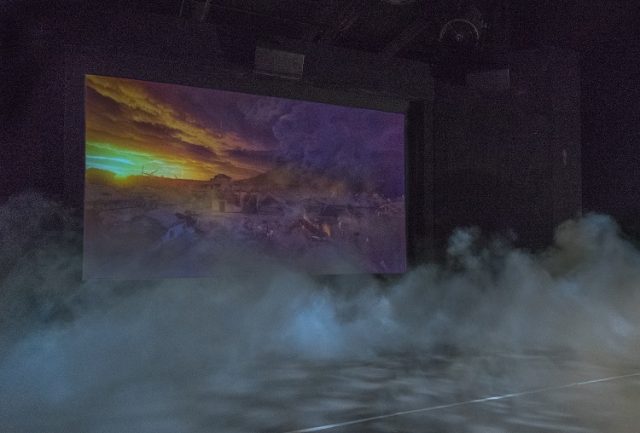
2. 4D Eruption Theatre
You hear distant booming as you move through the exhibit long before you reach the space. The 4D Eruption Theatre provides a timeline between ominous earthquakes that were ignored on Aug. 23 to the full-scale destruction on Aug. 24. The computer-generated video, accompanied by thunderous roars, a vibrating floor and a smoke effect wafting across the room gives a genuine sense of the volcano’s power.
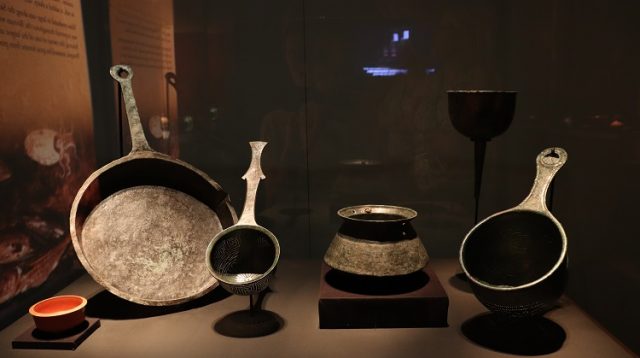
3. Daily life
The city of Pompeii was a surprisingly sophisticated place: underground running water, floor heating, waste pipes in sinks and lavatories. As a bustling port city with access to a range of goods, its residents’ diet consisted of fresh fruit and vegetables, roasted meat and fish, and lots of wine. Check out familiar kitchen cookery implements like colanders, pans, funnels and even a salt cellar. There’s also a terracotta glirarium, a container used to raise edible dormice, a delicacy for the wealthy. Look for the bowls of charred raisins, pears and barley, too.
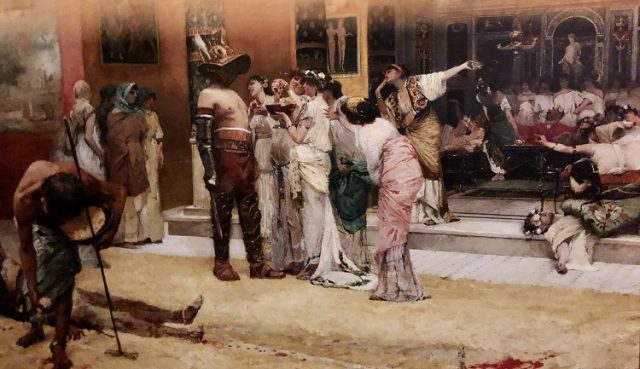
4. Gladiator rock stars
The tradition of revering celebrity athletes goes way back. A Pompeii gladiator called Celadus was referred to as “the man the girls sigh for.” These tough guys were pretty cool, competing in an amphitheater that held a whopping 20,000 fans, just short of the capacity of PPG Paints Arena. They received the best healthcare, food and training. Many were slaves but were able to buy their freedom — if they survived long enough. A gladiator trophy helmet, shin guard armor, weapons and other implements of the trade are on display.
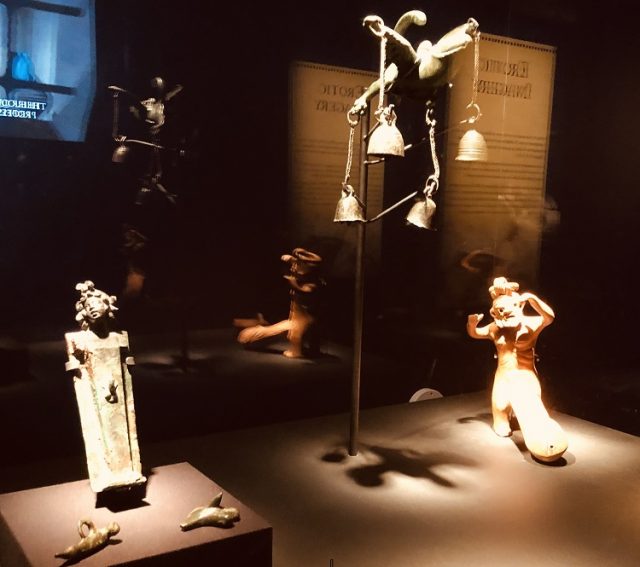
5. Roman erotica
This part of the exhibit comes with a parental warning. Take the stairs to a display of sexually explicit artifacts and mosaics that demonstrate Roman sexual customs. Phallic imagery, for example, was common in households and on jewelry as a symbol of good luck, power and prosperity. A CGI video tours the layout of a Pompeii lupinare, or brothel.

6. “Volcanoes: The Fires of Creation”
This new movie screening at Rangos Giant Cinema is timed perfectly to add to the interest in Mount Vesuvius and the fate of Pompeii. Filmmakers traveled the globe to show the beneficial impact volcanoes have on the world. Featuring National Geographic photographer Carsten Peter, “Volcanoes” is offered in 3D and 2D versions. Admission to Rangos is an additional $7.
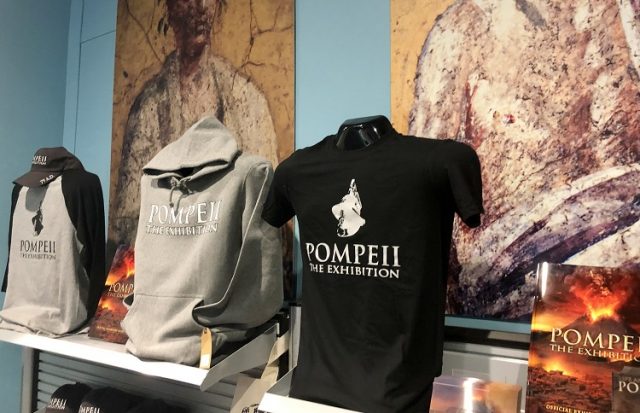
7. The gift shop!
Yes! We love to exit through the gift shop and find all sorts of intriguing wares. Along with T-shirts and hoodies, shot glasses and magnets, the collection includes exquisite replica necklaces, a bracelet of coin charms, and desktop gladiator helmets. For kids, snag science experiment kits such as a Pompeii Ash Storm, Mini Lava Lamp and Table Top Lava Flows. And with the Volcanic Fossil Kit, kids can use archaeological tools the way scientists did in Pompeii.
Pompeii: The Exhibition is a separate charge from Carnegie Science Center’s general admission. Timed tickets are $15.95 for ages 3-12, $17.95 for seniors and $19.95 for ages 13 and older.






